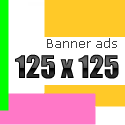 Body language occupies a dramatic place in the Arab culture since misinterpreting or using a sign that elsewhere means one thing, or even nothing at all, could in Kuwait lead to a faux pas. Body language across the Middle East is distinctly different and diverse, thus it is strongly recommendable to be learnt for the sake of avoiding unintentional insults.
Body language occupies a dramatic place in the Arab culture since misinterpreting or using a sign that elsewhere means one thing, or even nothing at all, could in Kuwait lead to a faux pas. Body language across the Middle East is distinctly different and diverse, thus it is strongly recommendable to be learnt for the sake of avoiding unintentional insults.The greeting
The initial greeting at a formal or informal meeting is always preceded by a handshake. In the Middle East people shake hands with the right hand only. Handshakes open up and close a meeting and hands are shaken longer but less firmly than in the West.
Residents who have been here longer are familiar with the local nose-kiss greeting when men close to each other greet by touching with the tip of their noses. (see illustration)
Further, placing a hand on your heart along with a slight bow is a sign of respect demonstrated at the initial stage of a meeting. Having greeted one's partner, business talk can commence. Mind it - maintaining eye contact is considered a prelude for a friendship or business deal as it creates a bridge of trust between the parties. Lack of eye contact, some say, might strongly convey the message 'you are unimportant'.
Here is a list of some more signs used in Kuwait and in the Arab world that I have either come across, heard about or pointed not to use during my extended sojourn in the country.
An expat who has lived in Kuwait for three decades explained that when a Kuwaiti touches his nose ('ala hashmi' in literal translation from Arabic 'on my nose') he means: 'I will do the favour you asked me for.'
So does the gesture of pointing at both eyes with both your forefingers. If a Kuwaiti man points at his moustache, he also sends a message making a vow to keep his promise. "I'll take care of this" or "It is my duty" could be pictured with the gesture of placing one's right hand or right forefinger right under one's right eye.
The gesture, an Egyptian expat explained, literally translates into "I'll do what you want." If one puts his/her right forefinger on top of the head he supposedly indicates, "Everything is on my head to accomplish." In Kuwait, pointing at one's head and mentioning someone by name saying ('ala razi' or 'on my head') is interpreted as "I have respect for him/her." If the person you are talking to touches his head making this same gesture he means 'I respect you.'
Tantamount gestures
If a Kuwaiti starts moving his hand in circular movements in front of his stomach he disagrees with the mess that has been done. If an Arab touches his nose and at the same time lifts his head upward he says 'you are a snob.'
That gesture, an Arab expat explained, is often witnessed in traffic-related situations when the right of way was abruptly taken from someone. "The person whose right of way was not respected would follow the driver who was in the wrong and would point ironically to his nose lifting it slightly upward," he added.
On the other hand, the expression 'I am thinking' is illustrated grasping one's chin with the thumb side of the right fist. Beware, though, that if you hold your chin and start moving your hand up and down this can be considered a mockery of the person you are pointing at.
Biting one's right forefinger, which has been placed sideways between the teeth is an expression of regret. It usually means: 'I wish I did that' or 'I wish I knew' etc.
On the other hand, 'Wait a little bit' or 'be careful' is a sign illustrated by holding one's fingers in a pear shape and having the tips pointing up above the waist level and moving the hand slightly up and down. This gesture, many agree, can be observed extensively when driving in the jam-packed cities. And not only since the sign also implies: Be patient.
Predictably, 'Thank You' is a sign made by placing the palm of the right hand on the chest, bowing the head a little and closing one's eyes. Sticking your thumb between the teeth and pulling it out, across the Arab world, means someone who implies is not wealthy. The sign says, I am told, I have no money.
And my personal favourite: It is made with a quick snap of the head upwards with an accompanying click of the tongue translated as No. "That gesture can also mean 'unlikely', or 'whatever' explained a female Kuwaiti. A clicking sound accompanied by the word hruti (bull***t) means 'you are lying'. Hitting the right fist into the open palm of the left hand could be interpreted as contempt or threat for the person the gesture is directed at.
Also, showing the soles while sitting is considered rude because it is symbolic of 'you are being lower than my feet'. Lastly, 'come here' is illustrated with having one's right hand out, palm down, and fingers brought toward oneself repeatedly. The sign calls someone to come closer.
Source:Kuwait times







Comments :
0 comments to “SUWAYA,....Hand talk: Communicating physically”
Post a Comment